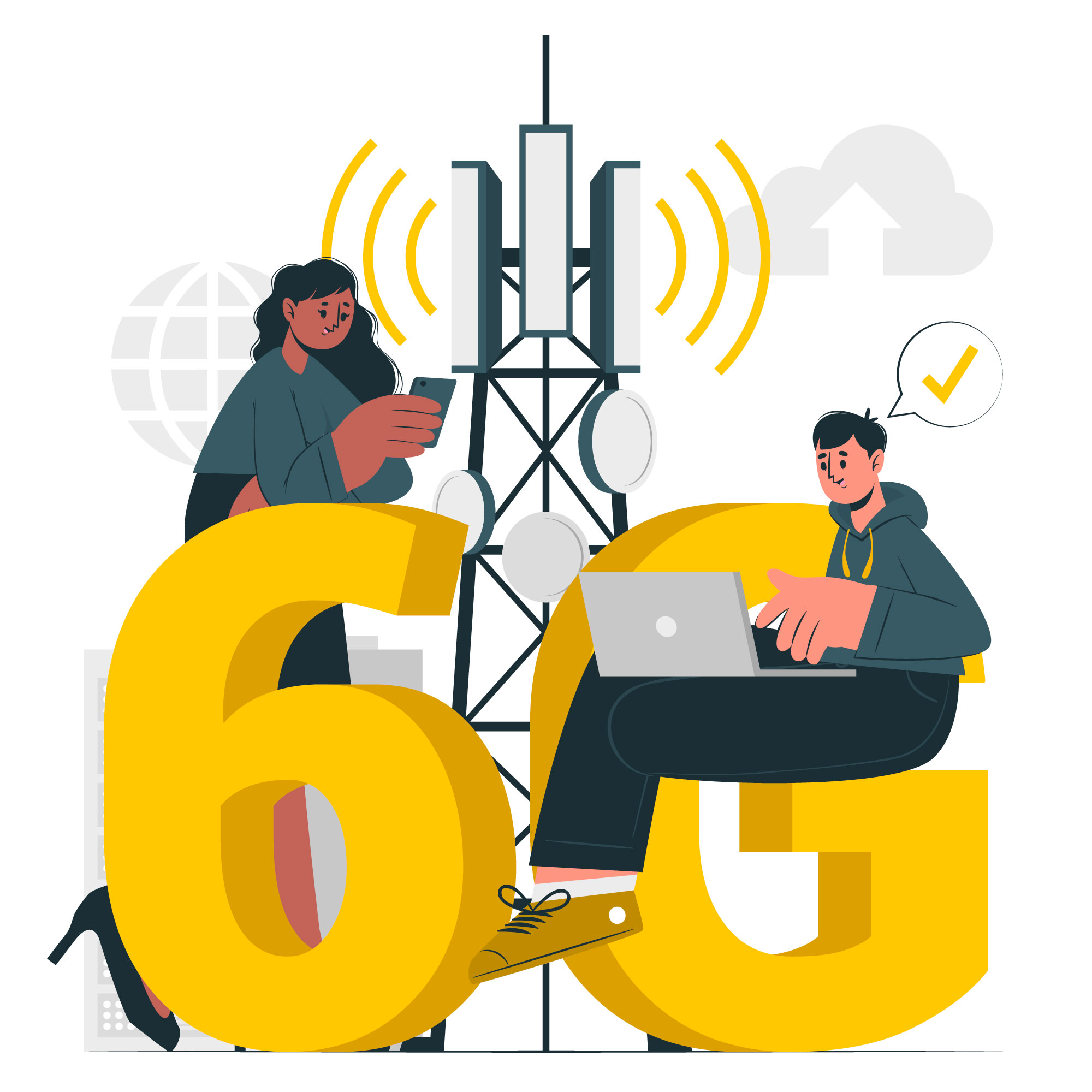The next frontier in telecommunications, 6G, is set to redefine how we connect, communicate, and interact with the world around us. Anticipated to roll out by 2030, 6G is not just an evolution of 5G but a revolutionary leap that will integrate advanced technologies, offering unprecedented levels of connectivity, speed, and reliability. This article explores the potential impact of 6G on connectivity and the transformative changes it promises.
Key Features of 6G
1) Ultra-High Speed and Capacity:
6G networks are expected to deliver data rates exceeding 100 Gbps, enabling lightning-fast downloads and real-time interactions. This enhancement in speed will support bandwidth-intensive applications, such as high-definition video streaming and immersive augmented and virtual reality experiences.
2) Reduced Latency:
With an anticipated latency of just 1 millisecond or less, 6G will facilitate instantaneous communication, crucial for applications like remote surgery, autonomous vehicles, and real-time gaming. This minimal delay will enhance user experiences and enable new applications that require real-time responsiveness.
3) Massive Device Connectivity:
6G aims to connect up to 1 million devices per square kilometer, significantly surpassing the capabilities of 5G. This exponential growth in device connectivity will support the proliferation of the Internet of Things (IoT), smart cities, and industrial automation.
4) Intelligent Network Management:
AI and machine learning will play a pivotal role in managing 6G networks. These technologies will optimize performance, predict maintenance needs, and ensure seamless user experiences through intelligent data analysis and automated decision-making.
5) Integration of Terahertz Frequencies:
6G will explore the use of terahertz (THz) frequencies, enabling higher data transmission rates and increasing bandwidth availability. This technology will unlock new possibilities for communication and data transfer, enhancing overall network performance.
Transformative Applications of 6G
1) Smart Cities:
6G will be the backbone of smart city initiatives, enabling real-time data collection and analysis for improved urban management. Applications will include smart traffic systems, energy-efficient buildings, and enhanced public safety measures.
2) Immersive Experiences:
The combination of ultra-high speeds and low latency will enhance virtual reality (VR) and augmented reality (AR) experiences. This advancement will transform entertainment, education, and training, offering immersive environments that blur the line between the physical and digital worlds.
3) Telemedicine:
The healthcare sector will benefit significantly from 6G, with telemedicine evolving into real-time remote surgeries and patient monitoring. The reliability and speed of 6G will facilitate critical healthcare services, making them more accessible to remote areas.
4) Autonomous Systems:
6G will support the development of autonomous vehicles and drones, enabling them to communicate with each other and their environment in real time. This technology will enhance safety, efficiency, and coordination in transportation networks.
5) Enhanced Global Connectivity:
With 6G, global connectivity will extend to underserved areas, bridging the digital divide. By leveraging satellite communication and advanced ground infrastructure, 6G will ensure that more people have access to reliable internet services.
Challenges and Considerations
While the promise of 6G is exciting, several challenges must be addressed:
- Infrastructure Development: Building the necessary infrastructure for 6G deployment will require substantial investment and collaboration between public and private sectors.
- Regulatory Frameworks: Developing appropriate regulations and standards for 6G technology will be essential to ensure interoperability, security, and fair access.
- Cybersecurity Risks: As connectivity expands, so do potential security vulnerabilities. Robust cybersecurity measures will be crucial to protect user data and maintain trust in 6G systems.
Conclusion
6G represents a transformative shift in connectivity, with the potential to revolutionize how we interact with technology and each other. As we move toward this new era, collaboration between governments, industries, and researchers will be essential to realize the full potential of 6G. By addressing challenges and leveraging its capabilities, we can pave the way for a connected future that enhances the quality of life and drives global innovation. The journey to 6G is not just about faster networks; it’s about creating a smarter, more interconnected world.








